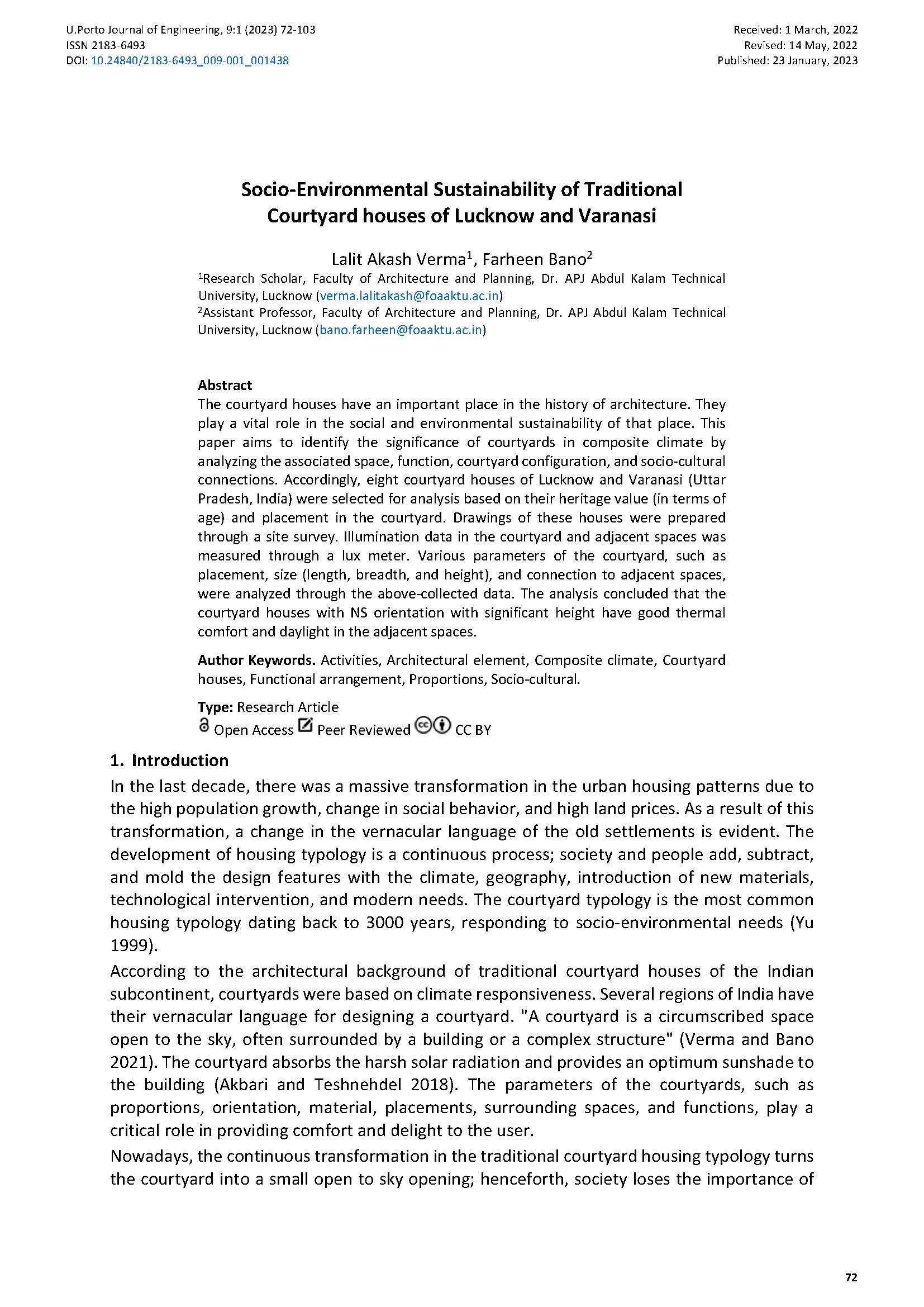Socio-Environmental Sustainability of Traditional Courtyard Houses of Lucknow and Varanasi
Main Article Content
Abstract
The courtyard houses have an important place in the history of architecture. They play a vital role in the social and environmental sustainability of that place. This paper aims to identify the significance of courtyards in composite climate by analyzing the associated space, function, courtyard configuration, and socio-cultural connections. Accordingly, eight courtyard houses of Lucknow and Varanasi (Uttar Pradesh, India) were selected for analysis based on their heritage value (in terms of age) and placement in the courtyard. Drawings of these houses were prepared through a site survey. Illumination data in the courtyard and adjacent spaces was measured through a lux meter. Various parameters of the courtyard, such as placement, size (length, breadth, and height), and connection to adjacent spaces, were analyzed through the above-collected data. The analysis concluded that the courtyard houses with NS orientation with significant height have good thermal comfort and daylight in the adjacent spaces.
Downloads
Article Details

This work is licensed under a Creative Commons Attribution 4.0 International License.
Authors who publish with this journal agree to the following terms:
- Authors retain copyright and grant the journal right of first publication with the work simultaneously licensed under a Creative Commons Attribution License that allows others to share the work with an acknowledgement of the work's authorship and initial publication in this journal.
- Authors grant the journal the rights to provide the article in all forms and media so the article can be used on the latest technology even after publication and ensure its long-term preservation.
- Authors are able to enter into separate, additional contractual arrangements for the non-exclusive distribution of the journal's published version of the work (e.g., post it to an institutional repository or publish it in a book), with an acknowledgement of its initial publication in this journal.
- Authors are permitted and encouraged to post their work online (e.g., in institutional repositories or on their website) prior to and during the submission process, as it can lead to productive exchanges, as well as earlier and greater citation of published work (See The Effect of Open Access).

